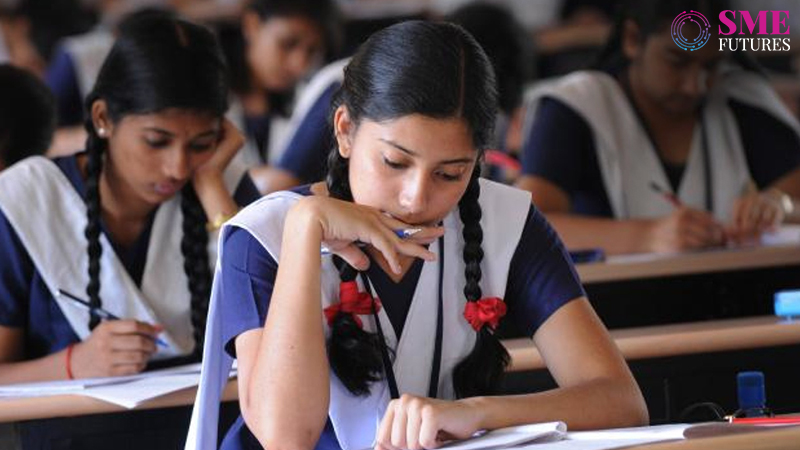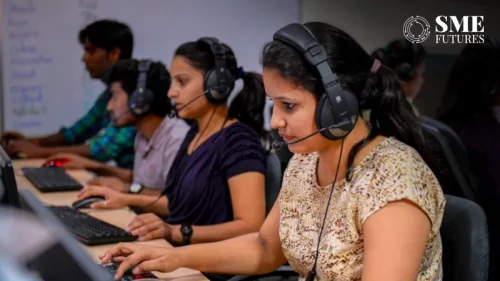While quantitatively, the literacy level is making great strides in India, the type of education that the students are receiving has been questioned time and again. To change the education system at its core has taken years of waiting—exactly 34 years and a massive consultation and brainstorming process. Which has finally resulted in the formulation of the National Education Policy (NEP) 2020, that was announced last year amidst the first wave of the pandemic, and which aims to provide high quality, equitable and inclusive education to all.
One year after India’s educational policy was completely overhauled, it has resulted in numerous changes in the ecosystem. It replaces the 10+2 education model with the 5+3+3+4 model and mandates that education should commence at the age of three, as opposed to the previous age of six. The curriculum has been tinkered with and regional languages as a medium of instruction have been included as well. As per the new policy, there will be 12 years of schooling with three years of Anganwadi or pre-schooling. While in the field of higher education, the government aims to raise the gross enrolment ratio to 50 per cent by 2035, along with effecting many other changes.
Recently, the government has come with some new additions to this policy.
These initiatives are—the Academic Bank of Credit and the Artificial Intelligence programmes to facilitate an open education system and prepare students for the future AI based economy.
Educationists in India see this policy as really good and transformative for Indian education with a 360-degree holistic approach that will bring it at par with global standards.
“The NEP came out with the vision of transforming the education system like the much-needed tectonic shift. It’s a transformative public policy as it is aimed at a blend of digital and traditional learning systems which is the need of the hour. It envisions a complete overhaul and re-energizing of the higher education system to overcome the hurdles and thereby deliver high-quality higher education, with equity and inclusion,”
comments Dr. Sanjiv Marwah, Director at JK Business School.
“The completion of one year of the NEP 2020, has certainly paved the way for transformational reforms in the school and higher education systems. Students will have flexibility and autonomy in designing their course content,” says Dr Silpi Sahoo, Co-founder and Chairperson, SAI International Education Group in Odisha.
“The policy is meant to provide an overarching vision and a comprehensive framework for the education system across the country. It’s re-envisioned so that the duration, structure, and design of the educational programmes need to match the role requirements that the students will play to help them decide on the career path that they would like to take up in their further higher education,” she further says.
At the same time, the experts feel that the NEP is not only going to positively transform the future of the students, but the teachers are going to benefit immensely too.
Surabhi Goel, CEO, Aditya Birla Education Academy, adding in her thoughts says, “Bringing in integrated programmes such as NISHTHA 2.0 for teacher training designed by the NCERT, will protect teachers from becoming obsolete. It will help make the education industry more accessible to the teachers, aiding in their overall development. Additionally, by adding further guidelines for skill development programmes as well as by making education accessible to all sections of society, the National Education Policy truly appears to be future-ready, and we look forward to the revolutionary transformation of India’s education sector.”
However, every good thing has a few grey areas too. First of all, a policy of this scale needs the support of a massive infrastructure to turn the aspirational part of the NEP into reality, which is obviously not ready or well-equipped enough to do that yet.
The other reason is the current downfall in the literacy rate.
Due to the impact of the lockdowns, the inception of online learning and other reasons, there has been a downfall in the literacy rate. Before the outbreak of the pandemic, it was 79.5 per cent in 2019. It dropped by 2 per cent in 2020 and is now at 77.7 per cent. This calls for the quick and strategic implementation of this policy.
The educationists that SME Futures spoke to have a lot to say about their take on the new education policy.
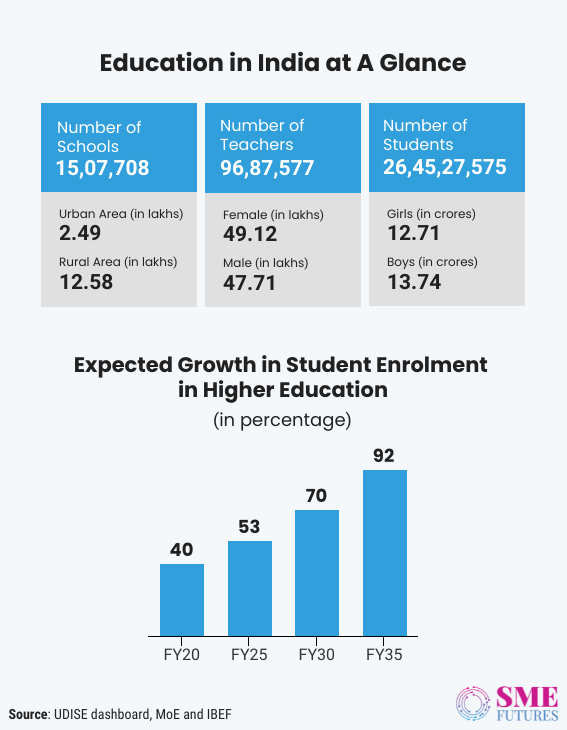
Is it on the fast track?
The National Education Policy, 2020 is the first education policy of the 21st century. It has been a year since its announcement.
On being asked about whether the implementation of the NEP 2020 is on track, education expert, Dr. Anuradha Shridhar, Head – Curriculum Development and Training at Aditya Birla Education Academy, while hoping for the timely execution of this policy says, “The government task forces have been set up across various states to study its implementation and address the various challenges. The government dashboard too will monitor and track the ongoing work. Higher education institutes are working on integrating curricular areas, which is going to be an area of challenge. Now, I can hope that things can be rolled out in phases for the NEP as per the timeline.”
She strongly believes that the NEP is overall a plan for the major transformation of the education sector.
“When the NEP came around everyone welcomed the new policy with gusto, and there were discussions all around given that we were in the online space, and everyone could afford to give their views. But at this stage I feel that there are some important questions we need to ask,” she says.
According to her those questions are—Will India be ready to roll it out by the 2023 timeline in the classrooms, both in the K-12 space and in the higher education space?
Will the teachers be trained?
Are the policies outlined? How will the assessments work? And many more questions remain in addition to those.
These questions have arisen at a time when the work on this policy has been going on at a frantic pace behind-the-scenes.
The government, the policymakers, the CBSE and the board officials have been working relentlessly to build the proper framework.
181 tasks are to be completed as part of the NEP 2020, as identified by the education ministry. Earlier this year, the government announced a phased policy implementation plan titled “Students’ and Teachers’ Holistic Advancement through Quality Education” (SARTHAQ). Which represents the NEP roadmap for the next ten years.
Besides that, the ministry will set up a review committee which will monitor the progress of these various tasks. And the officials associated with it will be held accountable in case of any lapses or discrepancies.
Another expert in the field Neha Parti, Director—Schools at Quest Alliance, a non-profit organisation, feels that the progress has been slow.
“While the ministry for human resource development (MHRD) has made certain efforts to aid in bringing the NEP to life, the progress has been slow,” she asserts.
Talking about the introduction of key efforts such as SARTHAQ—a guideline to implement the policy, Parti says, “Its adoption has been dependent on the initiatives taken by the various states themselves. These have largely been limited to the setting up of task forces to interpret the NEP and develop the implementation plans. Apart from the roadmap, there seems to be a lack of definitive milestones.”
NEP to reach the last mile
The NEP is an ambitious project and to expedite its implementation, the government needs to reach the very last mile in the ecosystem. But there are many challenges that need to be overcome before that can happen.
Parti tells us that translating the understanding of the NEP at the last mile is a challenge. “In our own capacity-building workshops, we have found that the teachers struggle to grasp the policy document and its implications,” she asserts.
Which can be a roadblock in implementation.
Prof Marwah of JK Business School agrees, saying, “The present education regime excludes formal training and orientation towards pedagogy for college and university educators. This calls for curriculum design revamps to make it more flexible and organic for enabling foundational and higher-order thinking and skill inculcation at different levels of education.”
Shridhar also adds in, saying, “To this end, it will require good guidance and teacher skilling from experts who have a thorough understanding of the NEP requirements – like the holistic report card, interdisciplinary subject teaching and competency-based curriculum planning.”
The fact is that the teachers of today are the products of the old education system. Many times, it has been noted and media reports have also shown that the quality of the teachers has been questioned by many. Experts suggest that this calls for continuous professional development trainings to improve the quality of the current teaching system.
“Training the government teachers is a humongous task for CPD. I believe that there is the need for a dedicated programme for consistent teacher training to sustain the quality of the currently employed teachers,” says Sahoo of SAI International Education Group.
Whereas the cost of CPD is another recurring expense.
To put it simply, there is a stringent need to restructure the training of the existing teachers according to the new curriculum, especially in the rural regions. This is another big task for the government.
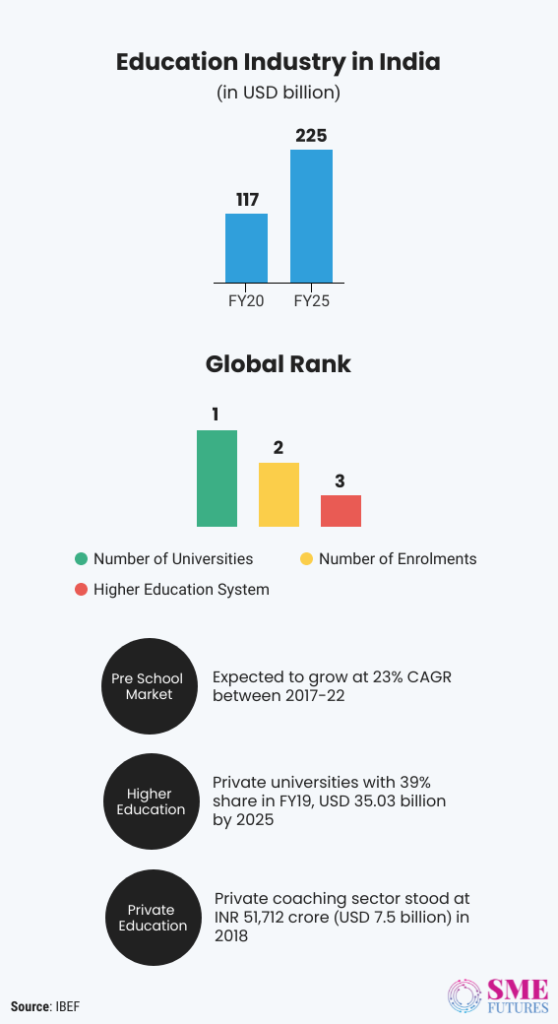
Capacity building
The Indian education sector needs more teachers.
Capacity building within the education departments to bring about comprehensive change remains a task.
On this, Parti says, “There is a need for collaborative and consolidated efforts by various stakeholders at the state level to come together and chart a new vision for education. It requires state education departments to design a change management process to make the NEP a reality.”
Another fact on which the government needs to align its focus is on the availability of educators. For a long time, there has been a dearth of trained teachers.
According to the latest data, the total number of teachers in 2019-20 was 9.68 million (surge of more than 250,000 from 2018-19). But the study predicts that the number for 2020-21 may vary or reduce as an aftermath of the pandemic. We will know the outcome of that in 2022.
On the other hand, the figures from the Standing Committee on Human Resource Development (2020) reveal that 23 per cent of the total posts for teachers (including elementary and secondary levels) under Samagra Shiksha are vacant.
The states with comparatively higher vacancies include—Jharkhand (48 per cent), Uttarakhand (39 per cent), Kerala (39 per cent), and Karnataka (33 per cent).
The NEP also talks about vocational training in schools. Its execution will be impossible without bringing in trained experts or professionals as teachers into the classrooms. For example, a normal teacher can’t teach carpentry, or how to use tools or the differences between various kinds of woods. This fact has created another challenge for the stakeholders.
“There is a need for focused attention towards teacher capacity-building and for ensuring that the requisite number of teachers and resources are present within the schools to complete the policy provisions and translating this into action will require a systemic overhaul in the processes like teacher recruitments, the growth pathways and the ongoing support systems available for them,” suggests Parti.
While the policy does touch upon these aspects, the on-ground reality is that the initiatives for policy implementation remain restricted to isolated instances of teacher workshops and trainings, content revision or digital content production.
At the same time, this argument doesn’t consider the fact that in the NEP draft, the implementation of the various programmes is heavily reliant upon the Anganwadi workers. And they are already overburdened by their public health and nutrition duties in the process of delivering quality Early Childhood Care and Education (ECCE).
The policy says that the Anganwadi workers or teachers with 10+2 or above qualifications shall be given a 6-month certification programme in ECCE. While those with lower qualifications will be given a one-year diploma programme covering early literacy, numeracy, and other relevant aspects of the ECCE.
But the question is, how much can they learn in this timeframe?
Experts feel that the government should plan degree-equivalent in-service courses to adequately prepare the facilitators, enabling them to take pre-primary and primary education to a world-class level.
Problems due to the pandemic
Like for everything else nowadays, the pandemic has been a huge dampener for the education sector as well.
Reverse migration, job loss, economic loss and the shift to the online space have been detrimental to education. There has been a significant surge in the dropout rates. Government data suggests that this rate in India is more than 17 per cent at the secondary school level. While the dropout rates at the upper-primary (VI to VIII) and primary levels are 1.8 per cent and 1.5 per cent respectively.
These numbers will have a direct impact on the implementation of the NEP, feels Dr. Shridhar.
“Two years in the life of the students have gone by without being in a physical classroom space due to which there are huge learning gaps. It will take a year or two to bridge these learning gaps in terms of the students’ skills of comprehension, understanding and application,” she says.
Once all students have been brought to the same level, one can think of slowly and parallelly rolling out the NEP reforms and the new NCF, she continues. “This is easier said than done since it requires governance, teacher understanding and most importantly robust implementation at the grassroots level,” Dr. Shridhar further comments.
Parti also feels the same and according to her, the NEP and its implementation have taken a back seat due to the pandemic.
“Due to the lockdown and with the schools closed, the state departments have been compelled to focus on ensuring that learning is available to all the children, as well as in ensuring the mental well-being of both the children and the teachers. As the country begins opening up, they are now focused on devising a safe school reopening plan. Amidst all of these pressing concerns, the NEP implementation seems to have taken a backseat,” she points out.
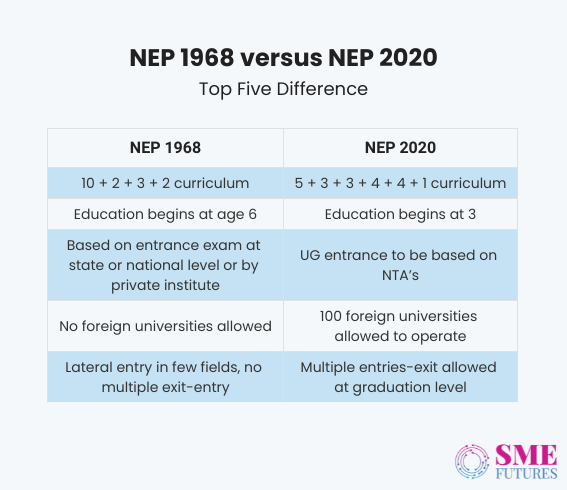
Where is the infrastructure?
To implement the NEP, to build capacity or to reach the last mile, the education sector needs infrastructure. In other words, it requires funding!
Which the educators believe is lacking in this sector.
In fact, there were no separate funds for the NEP 2020 in the budget announced this year, which further discouraged them.
Let’s break it down numerically to give you a better picture.
The education ministry requested Rs 10.37 lakh crores under the 15th Finance Commission (2021-26) to implement the NEP 2020. This equates to Rs 2 lakh crores per year. However, the budget announced in February was cut short by Rs 6,037 crores.
The funds allocated for 2021-22 were Rs 93,224 crores, 6.13 per cent lower than the previous budget of Rs 99,312 crores for 2020-21.
The education sector was dissatisfied with what they got, as it stood in total contrast with what the government wanted to achieve with the NEP 2020.
At the same time, the policy stipulates that public investment in education should be up to 6 per cent of the GDP. Which has been a goal since the national policy of 1968 and has yet to be achieved. While the current investment has only reached to 3.1 per cent, as per the Economic Survey.
Considering this, the education fraternity is most concerned about the ‘how’ part.
How will the NEP implementation succeed? How does it plan to retain students? How does it plan to enhance social and gender inclusion? And many more such questions abound.
“Under the NEP, the aim is to build school complexes or clusters, ideally one per district across the country. Besides that, it talks about pleasant classroom spaces, safe and clean drinking water, playgrounds and other amenities. All these to be met in a funding of only 3.1 per cent of the GDP seems like a task, and I ask, how it is going to happen?” says Sahoo.
“Funding is a hurdle hampering the NEP’s implementation in the higher education sector. Private institutions too need to offer more scholarships to make admissions possible for the students who belong to the low-income strata, but the NEP fails to discuss how this can be achieved. This indicates a great need for large public funding in higher education, which in reality does not fit well within the current scenario,” says Marwah.
According to some experts, the central and state governments will face significant financial liabilities as a result of this; they will need to find an additional 6.4 lakh cores. Therefore, funding for policy implementation is the most significant challenge for them.
It also implies that schools and colleges are going to increase their fees to fulfil their targets.
“The increase in the education budget from 3 per cent to 6 per cent of the GDP is simply not enough to meet the implementation needs. Lastly, our country still lags in digital penetration. The digital divide is a very big hindrance in the way of the NEP,” adds Marwah.
Due to COVID-19, there has been a dynamic shift in the education sector. Lately, online or hybrid education has become the mode of learning, indicating the need to establish a robust digital infrastructure.
But in the current scenario this is not the case, and we have been left grappling with the huge learning gaps that have been engendered due to the pandemic and the lack of a proper digital infrastructure.
That’s why during the lockdowns, many students were deprived of education, and scores of them just dropped out.
Being a diverse and a developing nation, around 65 per cent of our population is rural and 8.5 per cent of the population resides in the tribal belt. Where the connectivity of roads and electricity and the internet is not at par with the urban or semi urban areas. “Reaching out to these areas is a herculean task especially when the NEP 2020 stresses on technology driven education. But a big challenge here is establishing a digital infrastructure that caters even to the remote areas,” says Sahoo.
To strengthen the infrastructure digitally or otherwise—the only way is to bring in a huge investment in this sector. How the funding for that is going to be managed, is yet another challenge.
To overcome this financial challenge, one way is to collaborate in the form of the PPP model, i.e., a public-philathropist partnership. Huge private investments are also equally essential for strengthening infrastructure. However, this ultimately leads to more privatisation of the education sector despite all the precautionary measures mentioned in the policy.
The NEP needs to be open to change
If the provisions in the NEP are to become a reality, there is a need to bring about mindset shifts at all levels, say the experts.
“Though the policy seeks to bring about a holistic change in the education system of India, its success depends on the will and way in which it will be implemented,” feels Sahoo.
According to Dr. Shridhar, the crises of the past two years have done a lot of damage to the education system. Further, the implementation of the NEP at an India level is too overwhelming and pressure inducing, which might lead to some discrepancies.
“Students, teachers, school heads and boards have gone through a lot of uncertainty in the past two years and are still struggling. The NEP implementation will put a lot of pressure on them. Further, since they have been only experimenting with new technologies and new ways of teaching and learning, the zeal to learn the new needs to be subdued because at the moment, the teachers are tired,” she avers.
More than anything – the willingness to unlearn and learn needs to be there, she adds.
On the other hand, Dr. Marwah posits a different argument.
He believes that although technology is a great enabler, it also limits us. It connects people but has its own set of limitations as far as teaching and learning are concerned. The NEP is extremely experiential and palpable, and it cannot be brought into full action through online devices alone, he said.
“The essence of the NEP essentially lies in learning through observation, listening, exploring, experimenting, and asking questions. All of these are hands-on experiences, which require interest, motivation, engagement, and the need for children to understand why they are learning. As a nation and society, it is very important to take the NEP more seriously. Thus, every step ought to be taken to ensure that the NEP is implemented in letter and spirit and in an expedited manner,” he suggests.
For the implementation of the NEP, there are many other measures that need to be taken to ensure the flexibility and feasibility of this policy in our education system.
Dr. Marwah puts forth some of them. Firstly, it should be made mandatory for institutions to shift from the content-driven curriculum that earlier inspired rote learning to applied learning. Secondly, institutions should design a 360-degree assessment model that covers the overall well-being of the students.
Last but not least, educational institutions should bet big on experiential learning. This can be done by inculcating vocational skills and encouraging mathematical thinking among the students and by teaching them modern-day subjects like data science, machine learning, robotics, analytics, coding etc.
Finally, a fundamental shift from ‘what to think’ to ‘how to think” is the need of the hour.

